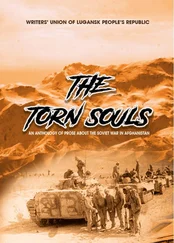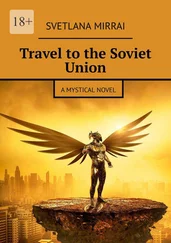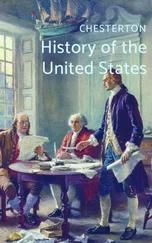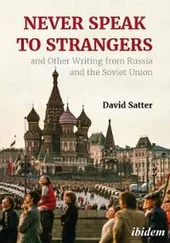1 ...6 7 8 10 11 12 ...33 The factory committees were thus in the vanguard of all the workers’ struggles between February and October–for the eight-hour day, for higher pay and better conditions, and then increasingly for ‘control’ itself. At first the pressure was directed particularly against harsh foremen or staff: workers sometimes dealt with unpopular figures by bundling them into a wheelbarrow and carting them out of the factory gates, to the accompaniment of jeers and catcalls, for a ducking in the nearest river. Increasingly, however, the struggles concerned the very survival of enterprises. Faced with newly militant workers, as well as the more familiar problems of shortages of raw materials, fuel and spare parts, employers sometimes decided that the game was not worth the candle, and that their capital would be better invested in something safer. There was a wave of factory closures. The workers regarded these as lockouts, and often reacted by occupying the factory, and trying to keep production going under their own management.
Right from the beginning, some soviets and factory committees had armed contingents at their disposal. These bodies, often formed during the heady days of February, gradually assumed the name of ‘Red Guards’. They were able to provide themselves with weapons and ammunition by courtesy of garrison soldiers, or by pilfering from armaments works. They patrolled factory premises and maintained order in industrial areas (where the writ of the Provisional Government’s militia never really ran). Not until the Kornilov affair at the end of August did they assume real political importance. At that stage, however, the Bolsheviks, now in control of the Petrograd and many other urban soviets, mobilized them as paramilitary units under the soviets’ Military Revolutionary Committees, originally set up to forestall a military coup (see below, page 48). In that form they made a major contribution to the October seizure of power.
The real troubleshooters of 1917, however, were the soldiers, both at the front and in the rear. Their charter was the famous Order No. 1, passed in full session by a seething and chaotic Petrograd Soviet, before any Provisional Government had even been established. It was intended originally for the Petrograd garrison alone, but it soon spread far more widely, probably because it met soldiers’ wishes, and was swiftly taken up in most units. It called on servicemen to elect committees to run all units down to company level, and to send their delegates to the new soviets of workers’ and soldiers’ deputies. Soldiers were to recognize the soviets (rather than the Duma) as their political authority. In combat situations, officers were to be obeyed as before, but the committees would control the issue of weapons, and off-duty officers were no longer to be recognized as superiors. In practice, in some units the committees actually arrogated to themselves the authority, not mentioned in Order No. 1, of electing and dismissing officers.
The position of officers during 1917 was not enviable. Because of the high casualty rate at the front during two and a half years of war, most of the junior officers were quite recent appointees, from the same social class as their men, often raw and unsure of their new-found superiority. Though some reacted flexibly to the new situation and found a common language with their men, others retreated into an ex-aggeratedly rigid defence of their recently acquired authority. Among the senior officers were rather more survivors from pre-1914, but they were mostly men who had been taught to regard politics as subversive, an affair of which they were properly ignorant. It is not surprising, therefore, that at all levels of the officer corps there was support for a return to the unquestioning discipline of pre-February.
Evidence suggests that the soldiers, especially at the front line, remained patriotic in outlook even after February, and determined at least to prevent the Germans advancing any further into Russia. The revolution did, however, induce in the men a feeling that they no longer had to obey all orders unquestioningly. The soviets’ peace programme circulated among them, and led to a widespread conviction that only a defensive war was still justified: the formula ‘without annexations or indemnities’ was very popular. The peace offensive also aroused expectations that the war would be over soon and that they could return home. These expectations were further sharpened by intensive propaganda from the Bolsheviks, who sent agitators, newspapers and broadsheets to popularize the idea of a separate peace to be concluded without reference to the Allies.
These expectations were rudely jolted by Minister of Defence Kerensky, who in June ordered an offensive on the south-western front. This was timed partly in order to aid the Allies (the mutinies in the French army looked at that stage more serious than the Russian ones), but partly because the officers hoped it would restore a sense of purpose and discipline among their men. The opposite turned out to be the case. Soldiers’ committees discussed the order to advance at great length: some refused, some went ahead initially and then pulled back when they saw the casualty rate. At any rate, the offensive soon turned into a rout in which the Russian army lost territory. Far more serious than that was the effect on morale. Whole units abandoned their positions, and some of them murdered officers who tried to restore order. Then the mutinous soldiers seized freight wagons, or even whole trains, and held them at gunpoint until they were transported deep into the rear. From there they could return home, rifles at the ready, to take a decisive part, as we have seen, in the share-out of land.
The mood of the garrison troops was, if anything, even more radical than that of those at the front. Many of them were recently mobilized peasants or workers, undergoing their training, and still identifying strongly with the class from which they came. The Provisional Government’s initial agreement with the Petrograd Soviet stipulated that these troops would not be sent to the front, but would stay in the capital to ‘defend the revolution’. And in fact the refusal of a machine-gun regiment to be sent to the front sparked off the July Days in Petrograd, when an undisciplined armed mob caused havoc on the streets.
Even at this stage, however, the army did not disintegrate altogether. Some units remained loyal, particularly Cossack ones, with their special traditions, or specialist units, like those from the artillery, cavalry or engineers. Nowhere was the collapse so complete that the Germans felt they could advance without risk. Indeed, the German High Command deliberately held back, fearing that a major advance might be the one factor which could yet restore morale in the Russian army.
At the time of the February revolution the Bolsheviks numbered, at the highest estimate, no more than 20,000, and their leaders were scattered in exile, at home and abroad. For that reason they had even more difficulty than the other parties in adjusting to the sudden changes. They were seriously divided about what to do, but the dominant figures inside Russia, notably Kamenev and Stalin, inclined towards cooperation with the other socialist parties in the soviets in exercising ‘vigilant supervision’ over the Provisional Government. Some even talked of a rapprochement with the Mensheviks.
Lenin had quite different ideas. He was still in Switzerland in February. He returned to Russia with the help of the German High Command, taking a specially provided ‘sealed train’ through Germany to Sweden. The Germans were anxious to facilitate his return, so that he could begin fomenting unrest inside Russia and spread his idea of a separate peace. They also provided the Bolsheviks with considerable funds thereafter, which helped to pay for the newspapers and political agitators who proved so effective among the soldiers and workers.
Читать дальше












